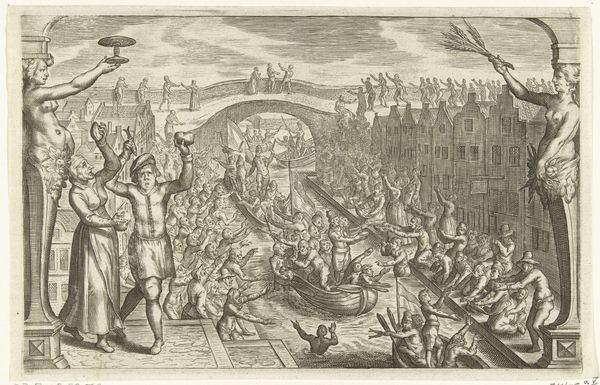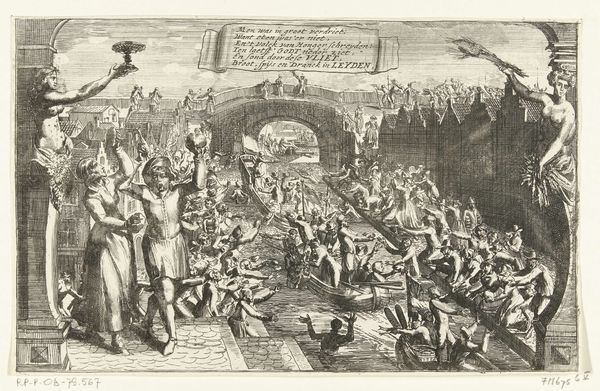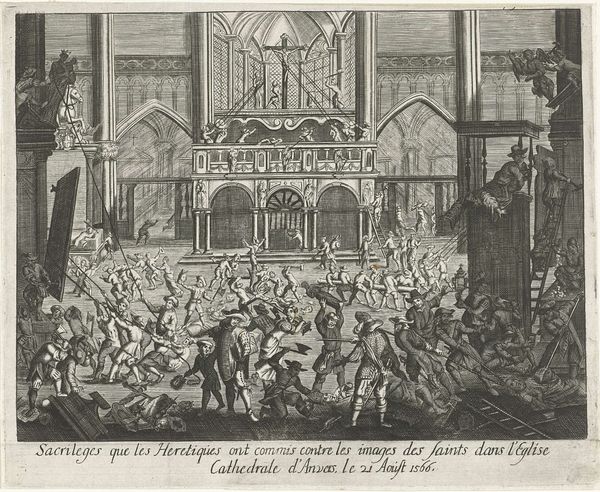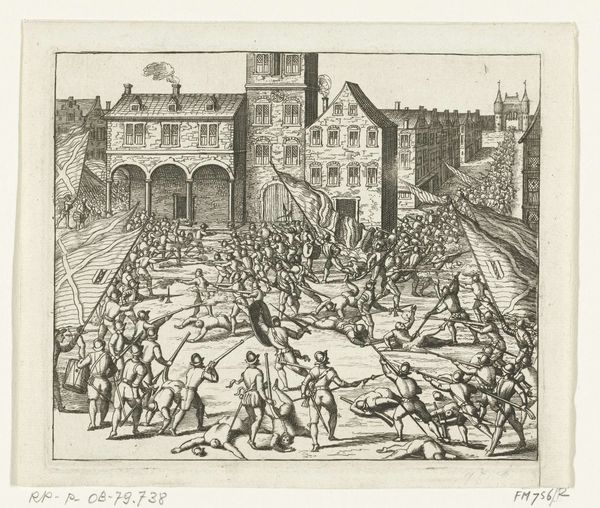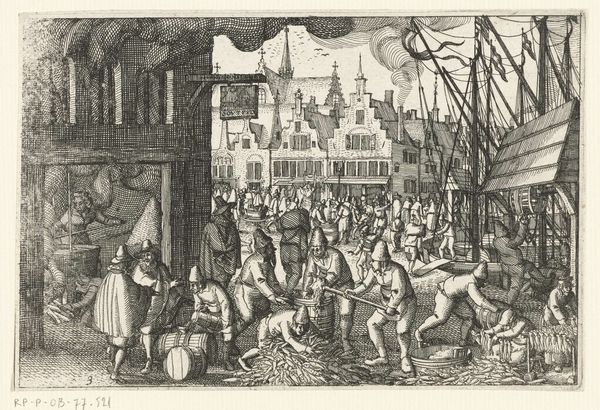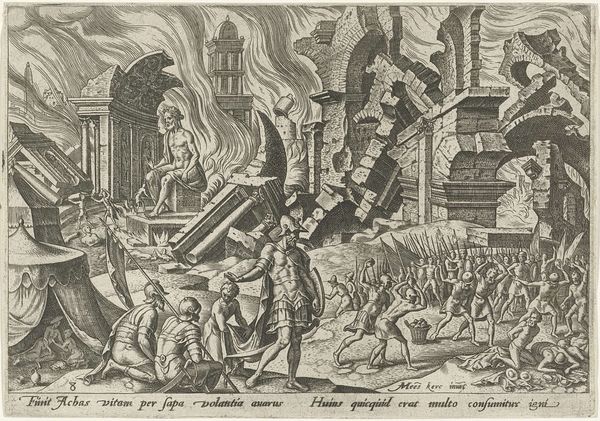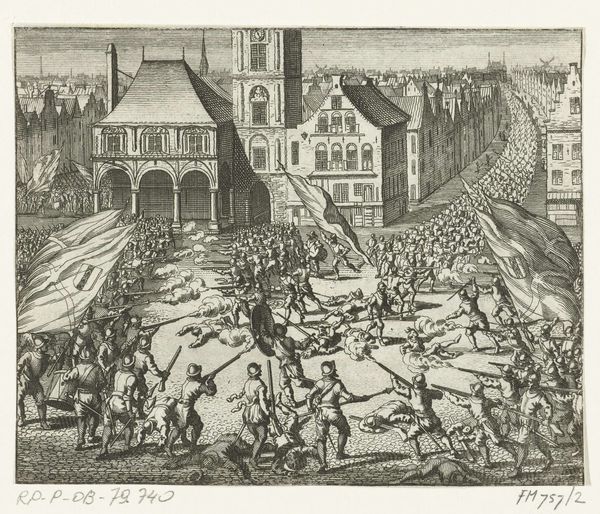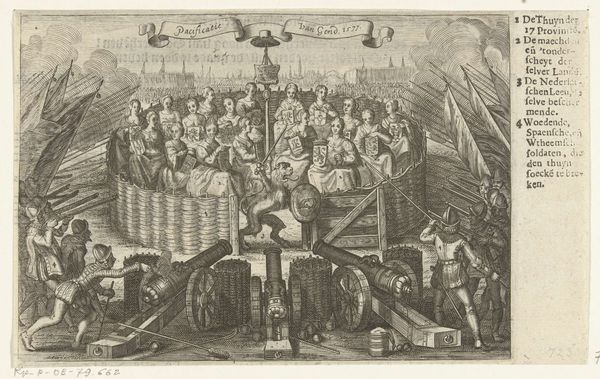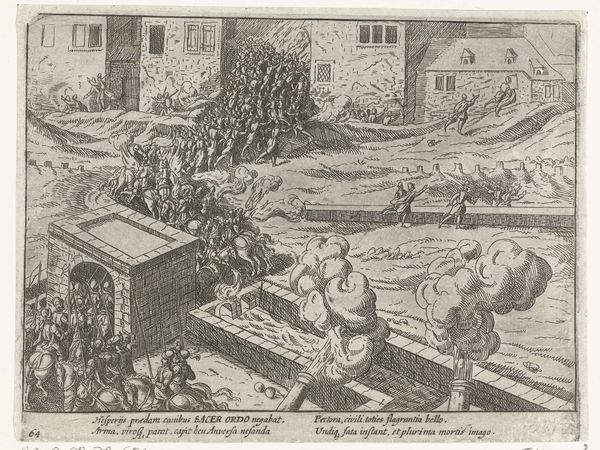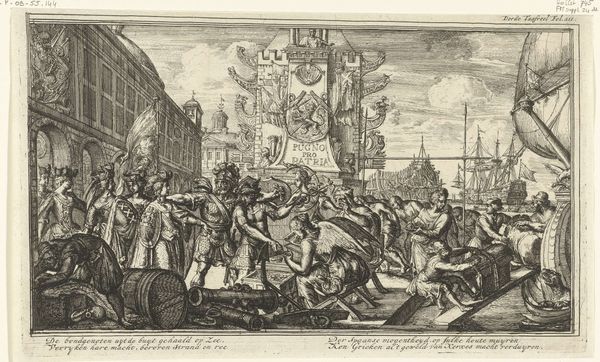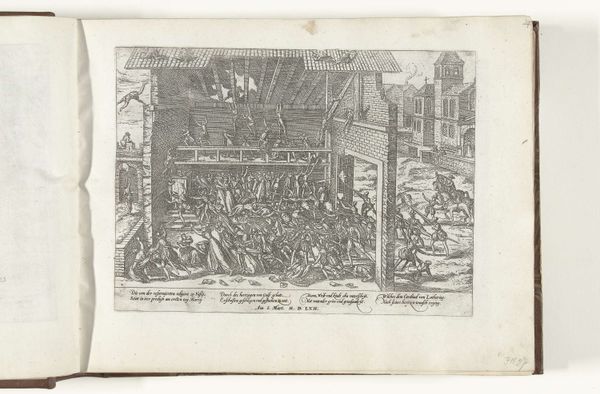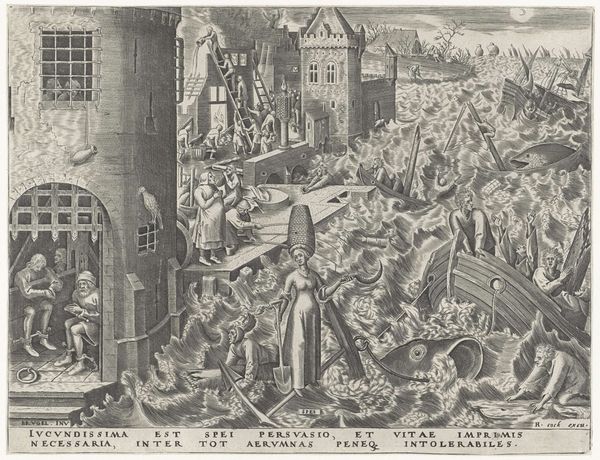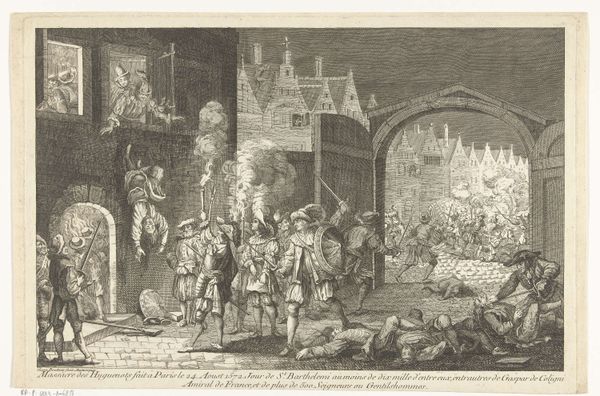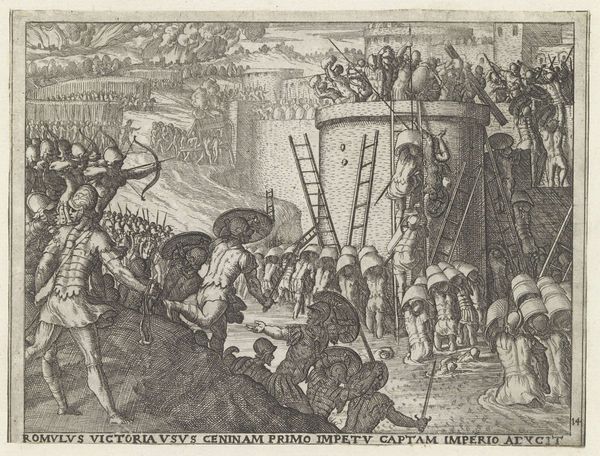
print, ink, engraving
#
ink drawing
#
narrative-art
#
baroque
#
pen drawing
# print
#
ink
#
cityscape
#
history-painting
#
engraving
Dimensions: height 108 mm, width 140 mm
Copyright: Rijks Museum: Open Domain
Curator: This detailed print, likely an engraving, depicts the "Spaanse Furie: inwoners vluchten in de Schelde, 1576," or "Spanish Fury: residents flee in the Schelde, 1576". It’s attributed to an anonymous artist, created sometime between 1613 and 1699 and housed here at the Rijksmuseum. Editor: The density of detail is overwhelming, almost oppressive. Look at the sheer number of figures crammed into this chaotic scene – people drowning, climbing, fighting... the line work itself seems frantic, mirroring the panic. Curator: Indeed. The subject matter itself—the Spanish Fury in Antwerp—was a brutal massacre by Spanish soldiers. The print captures that moment of absolute societal breakdown. Notice the burning buildings in the background and how people from different walks of life, rich and poor, are trying to escape into the river Schelde. Consider, too, the role of this image within the narratives of Dutch identity formation, particularly ideas of resistance and collective suffering. Editor: The material tells its own story too. Engravings like this weren't just aesthetic objects; they were a crucial means of disseminating information. It's a multiple. Think of the labour involved in its production—the engraver translating horror into reproducible form, allowing these images to reach a broad public to inform political sensibilities. The very materiality speaks to accessibility and distribution, creating shared experiences. Curator: Precisely. We can also think about the gendered and racial aspects here – while not explicitly portrayed, who is granted visibility within this narrative of conflict, and who remains hidden in the historical account? We need to engage intersectionally to fully understand how this history reflects not just national narratives, but gendered and racial hierarchies too. Editor: Absolutely. And thinking about materiality and class, you've got to wonder about the economics of printmaking during this period – the class positions embedded within the very process of image creation. How did artisans shape perceptions of this event, potentially influenced by their own societal standing? It reminds you that no image is truly neutral. Curator: By framing our approach around those complexities, we reveal that artworks like this serve as a complex tapestry of layered meanings and sociopolitical forces, demanding active analysis rather than passive admiration. Editor: Agreed. It's important to always be aware that they’re the product of particular means and contexts of production – not neutral windows onto history, but constructed objects that tell selected stories.
Comments
No comments
Be the first to comment and join the conversation on the ultimate creative platform.
